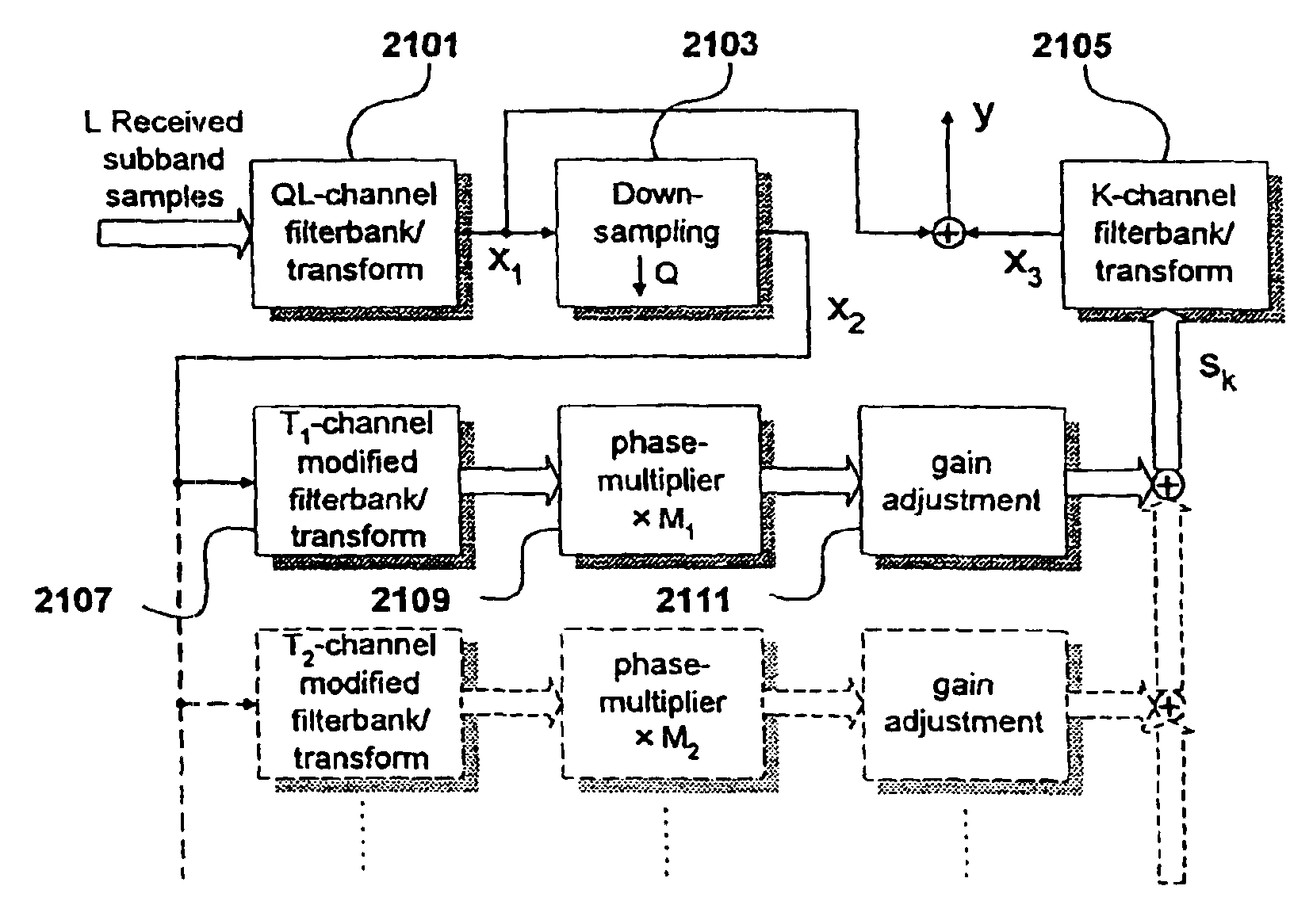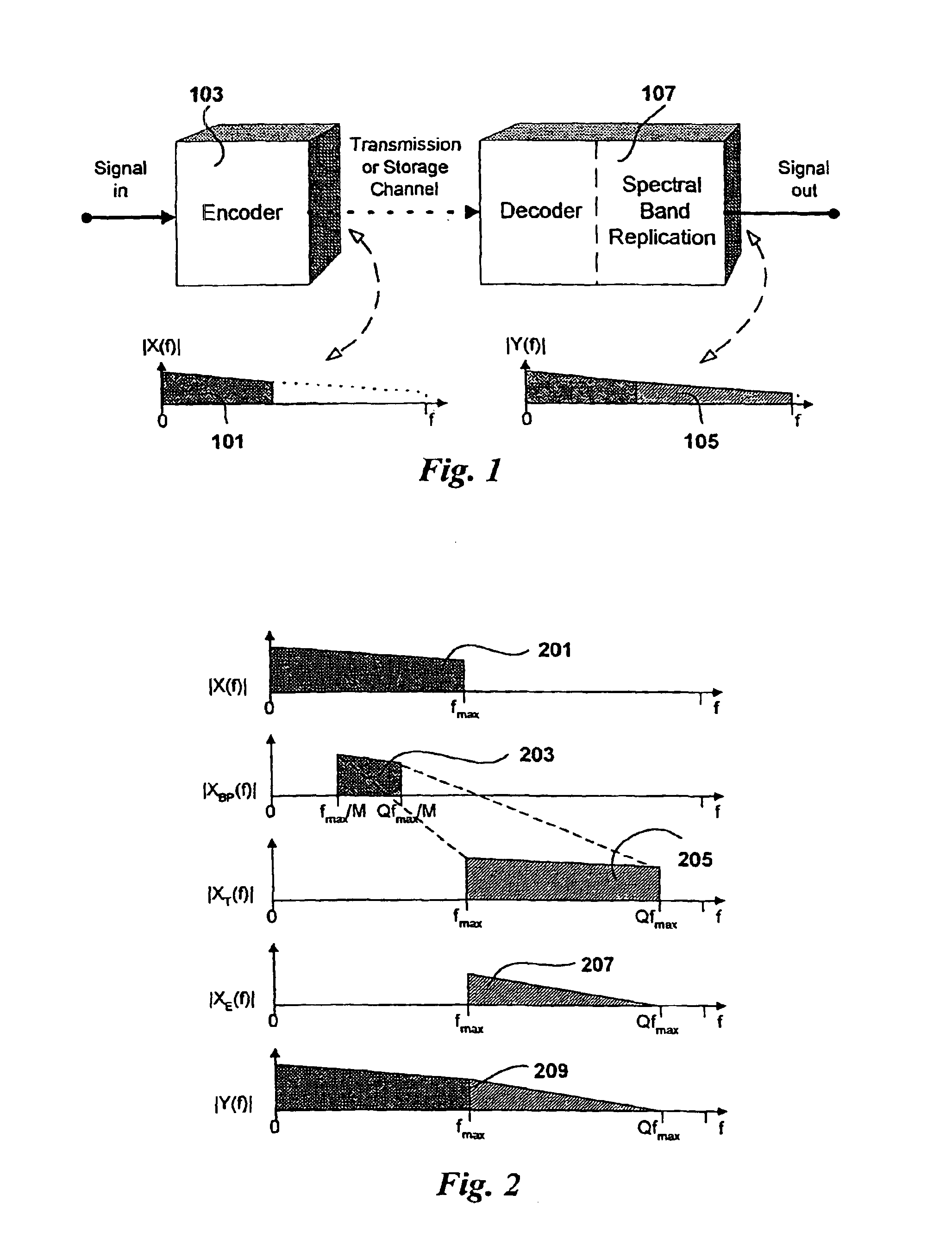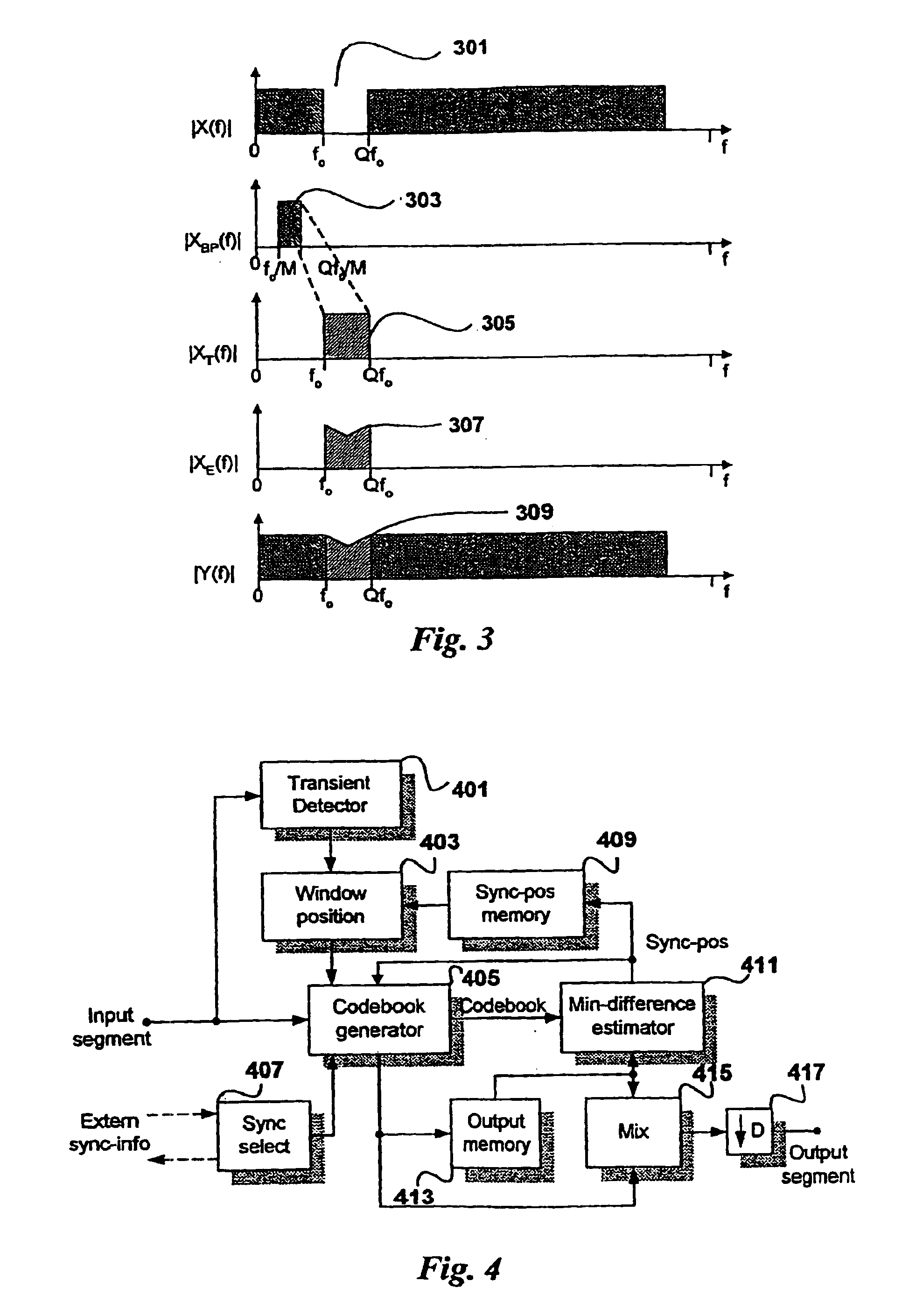Source coding enhancement using spectral-band replication
a source coding and spectral band technology, applied in the field of source coding systems, can solve the problems of annoying perceptual degradation, inefficient bitrate versus perceptual entropy of high-fidelity linear pcm signals, and thus important wideband speech coding, so as to achieve the effect of improving perceptual quality and higher perceptual quality
- Summary
- Abstract
- Description
- Claims
- Application Information
AI Technical Summary
Benefits of technology
Problems solved by technology
Method used
Image
Examples
Embodiment Construction
[0075]Throughout the explanation of the embodiments herein, emphasis is given to natural audio source coding applications. However, it should be understood that the present invention is applicable on a range of source coding applications other than that of encoding and decoding audio signals.
Transposition Basics
[0076]Transposition as defined according to the present invention, is the ideal method for spectral replication, and has several major advantages over prior art such as: no pitch detection is required, equally high performance for single-pitched and polyphonic programme material is obtained, and the transposition works equally well for tonal and non-tonal signals. Contrary to other methods, the transposition according to the invention can be used in arbitrary audio source coding systems for arbitrary signal types.
[0077]An exact transposition a factor M of a discrete time signal x(n) in the form of a sum of cosines with time varying amplitudes, is defined by the relation x(n)...
PUM
 Login to View More
Login to View More Abstract
Description
Claims
Application Information
 Login to View More
Login to View More - R&D
- Intellectual Property
- Life Sciences
- Materials
- Tech Scout
- Unparalleled Data Quality
- Higher Quality Content
- 60% Fewer Hallucinations
Browse by: Latest US Patents, China's latest patents, Technical Efficacy Thesaurus, Application Domain, Technology Topic, Popular Technical Reports.
© 2025 PatSnap. All rights reserved.Legal|Privacy policy|Modern Slavery Act Transparency Statement|Sitemap|About US| Contact US: help@patsnap.com



